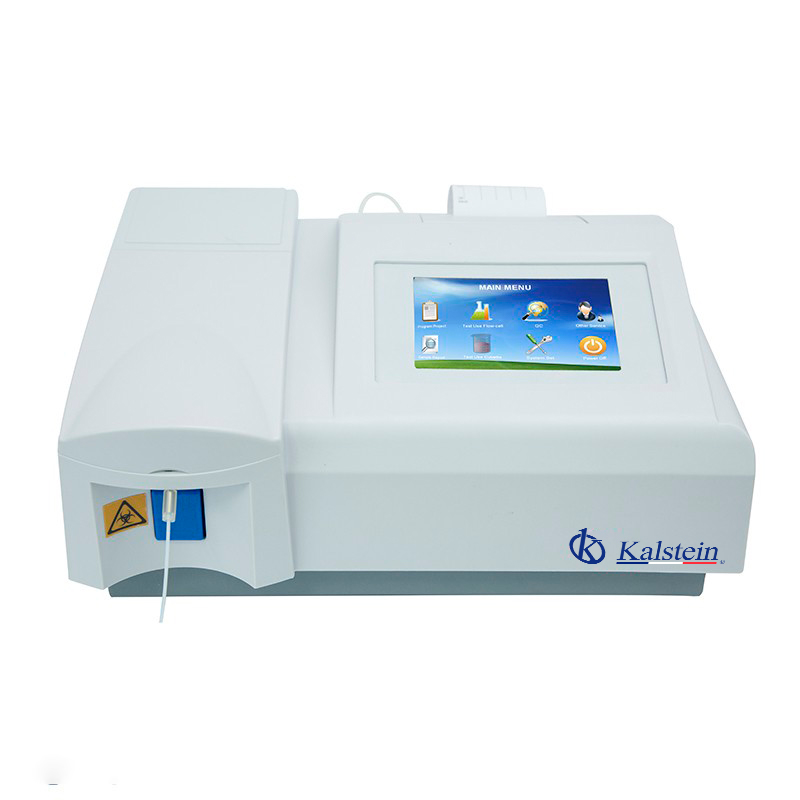Types of clinical laboratory analyzers

Un laboratoire clinique est un établissement doté des moyens nécessaires pour effectuer des analyses qui contribuent à l’étude, la prévention, le diagnostic et le traitement des problèmes de santé. Grâce aux avancées technologiques, les laboratoires cliniques ont intégré dans leurs différents domaines (biochimie, hématologie, coagulation, urine), des équipements automatisés de haute technologie qui ont permis de délivrer des résultats en moins de temps, avec plus de précision et d’exactitude et en réduisant le nombre de mesures les erreurs.
What are the characteristics and applications of an analyzer?

A reagent analyser is a computer that performs certain functions that facilitate the work in the laboratory, perform certain repetitive steps in the performance of the analysis, which consists of sampling and taking of reagents, mixing and measuring changes in the optical density of the reaction mixture specific for each parameter analyzed; thanks to the internal algorithms that process the result of the measure and returns a value of concentration of the analyte in the sample, this process is repeated until the analysis is completed.
What are the different types of coagulation analysers?

Coagulation analyzers are laboratory tools that speed up analysis of clotting factors, which represent proteins in the blood that help control bleeding. The analyser determines these factors. When a person has an injury or cut that can cause bleeding, clotting factors work together to create a blood clot that prevents constant and excessive blood loss.
How does electrophoresis work molecularly?

Functionally electrophoresis is a technique that consists of proportional migration of molecules through a gel or other type of porous matrix, depending on their molecular weight or size; movement generated by the electric field, i.e. we apply an electric current to molecules whether biological, DNA, protein or RNA, and they are separated according to whether they are larger or smaller.
What are the principles of electrophoresis?

This technique is widely used in laboratories, especially in those of molecular biology, because it is used in important procedures such as: separation, analysis and purification of RNA, DNA, or proteins, nucleic acids, this process is performed because most biomolecules have an electrical charge where their magnitude depends on the pH of the medium in which they are found; because of this, the biomolecules move when subjected to an electric field to the charge pole opposite to that of the molecule.
What is two-dimensional electrophoresis?

Two-dimensional electrophoresis is a special type of electrophoresis, considered a high-resolution technique that allows the separation of complex protein mixtures, thanks to its two-dimensionality, a distinctive feature that offers its resolution power.
Electrophoresis chamber

The electrophoresis chamber is the device where the sample is introduced for said process; and where the electromagnetic field that is formed in the electrophoresis process is created, said field takes place within a buffer solution in which the gel is submerged; the high concentration of electrolytes makes the transition of electric current possible. The principle of electrophoresis consists in the migration of the molecules through the gel generated by the electromagnetic field according to the molecular weight and size. This gel has pores that act like a strainer, causing small molecules to move faster than large molecules. In the chamber there are two poles that connect to the power source.
Electrophoresis: what are the necessary reagents?

Electrophoresis is an analytical technique in which a controlled electric current is used in order to separate biomolecules according to their size to electric charge ratio, using a gelatinous matrix as a base.
Electrophoresis: What is it? and What is it used for?

Electrophoresis is one of the main molecular biology techniques, they are considered the most used technique in laboratories in everything related to nucleic acid research. Using electrophoresis, we can separate DNA and RNA fragments based on their size and electrical charge through their migration through a porous material (gel), visualize them by staining, and determine the content of nucleic acids or proteins in a sample. , thus having an estimate of its concentration.
Fundamentals of electrophoresis

Electrophoresis consists of a technique that allows the separation of biomolecules according to their mobility and nature in an electric field on a porous matrix, it is one of the most widely used molecular biology techniques in the laboratory. Since through electrophoresis we can separate DNA and RNA fragments based on their size, visualize them by means of a simple stain, and in this way determine the content of nucleic acids in a sample, being able to have an estimate of its concentration.
